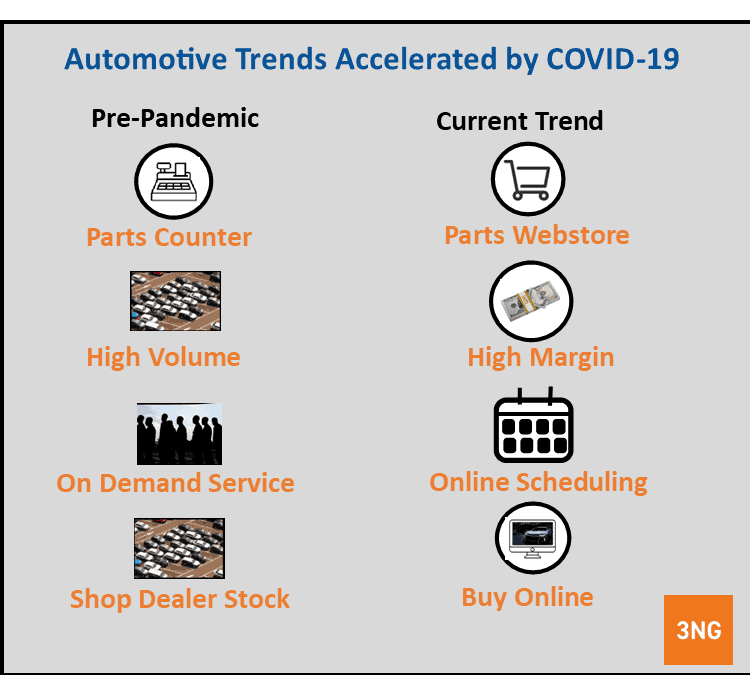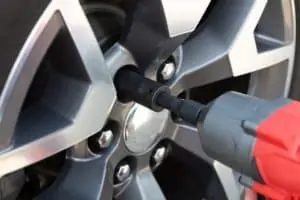When the COVID-19 Pandemic started, automotive companies prepared high unemployment and sales declines. Factory shutdowns created a spike in unemployment and an overwhelming industry wisdom said an economic slowdown was likely.
In response, many automobile companies cut production staff to prepare for what appeared to be an inevitable recession. This was the right plan for a severe and sustained economic crash, but the crash was not severe or sustained.
The result has been wide-scale component shortages that put pressure on just in time (JIT) supply chains. Because the JIT process eliminates surplus stock and limited manufacturing capacity forecasts, supply chains fell behind and are still stressed by wide-scale product shortages.
The Unexpected Demand Rebound
Thankfully, the global car industry did not sink into a worldwide depression. Instead, a dip in demand was followed quickly by near normal demand for cars and parts. The caused stress on companies who had prepared for a depression. The outcome has been short supply, frustrated customers and inflation.
How the Great Resignation has affected everything
The great resignation has affected staffing across the channel. Most companies have lost employees and almost all are struggling to hire staff in a difficult job market. And worse yet, regionalized COVID-19 shutdowns are making it difficult for supply chains to recover.
Dealerships have had staff departures. The most challenging has come from the retirement of experienced fixed ops managers.
Operations team losses have also been significant. Many sales associates, parts drivers and service technicians left the industry and have not returned. This high resignation rate has been impactful for dealerships who are struggling to provide basic services.
Automobile manufacturers have been better at retaining employees. But car company employees are stuck between dealers who need cars, trucks and parts and suppliers who cannot deliver parts.
Reductions in Vehicle Supply Have Caused Inflation
A healthy United States auto industry sells around 16 million vehicles with 45 days’ supply of vehicles. The industry currently has a sales forecast of 14.1M passenger cars and light trucks and 19 days’ supply of vehicles.
The low sales and low supply shows an unfilled demand for vehicles, which is showing as high vehicle prices. This is lifting used car prices and has improved profitability for used car retailers such as Carvana.
The most discussed impact has been reduction in vehicle production due to shortages in microchips. As described in the Economist, vehicles can contain up to 1,400 chips and modern vehicles cannot be delivered without the electronics to power advanced systems.
In response to the expected decline in sales, automakers cut component orders. As suppliers cut production forecasts, chip manufacturers cut production and allocated supplies away from the automotive industry. This created a chip shortage that slowed production and supply has been slow to recover.
Shortages have been made worse supply chain bottlenecks caused by port and truck driver shortages. Since most chips are manufactured in Asia, production increases have been slow to arrive at manufacturing plants.
This did not affect all automakers equally as some car manufacturers previously planned for upcoming chip shortages.
Effect on Dealer Fixed Operations
New car sales are not all that’s been affected. The repair and parts business has also had its trials. The supply issues that have been affecting new vehicle part supply have also caused repair part shortages.
Supply issues have also been widespread, affecting parts such as electronic control units, sheet metal, and motor oil.
And the economic effect of these issues cannot be ignored. The annual US repair business is almost a trillion dollar per year industry with just parts accounting for over $350B. And fixing cars is much more profitable selling cars with fixed ops accounting for over 60% of dealership profits.
Many dealers have turned to automotive consulting firms such as 3ng Consulting for help in hiring, training and retraining staff.
Effect on Body Shops
Body shops have been hit twice by the pandemic. First by sustained declines in demand and then by component shortages as demand has come back.
Reductions in miles driven meant that collision repair was the only repair channel with a sustained decline in demand. Reductions in miles driven from shutdowns, remote work patterns and the migration to online shopping all took drivers off the road.
This decline in demand was followed by part supply issues, which continue to add cost and delays to collision repairs.
Unexpected Results of the Pandemic
The pandemic sped the automotive digital transformation that had already started.
Online used car superstores such as Carvana and Vroom have benefitted from the used car profit windfall. And online part sales have also increased.
The Service Department has also been flooded with new approaches. Service customers now have more repair options such as virtual service bays, touchless delivery processes and mobile service.
Dealer groups have also been on a buying spree with more older dealers selling their store and retiring.

Long Term Effect of COVID-19
Car Dealerships
New business models have been targeting dealer business. COVID-19 accelerated their adoption. The most impactful are used car super sites and online part sales. Both can create sales and profit pressure for car dealers.
Automakers
Automakers learned a lot during the pandemic that will have a positive effect on their business.
- Supply chain. COVID-19 showed opportunities to improve Just in Time ordering.
- Profitability: Automakers such as General Motors are looking at direct customer ordering to reduce vehicle inventory costs.
- Used Car Superstores: COVID-19 showed the need to compete with used car super sites.
Consumers
Consumers have suffered from high car prices in. However, the long-term looks better. Car company competition will likely improve vehicle pricing and new options such as mobile service, online part sites and in-home vehicle delivery are probably here to stay.
All of these changes will offer consumers more options in the future and could lead to better customer service.






